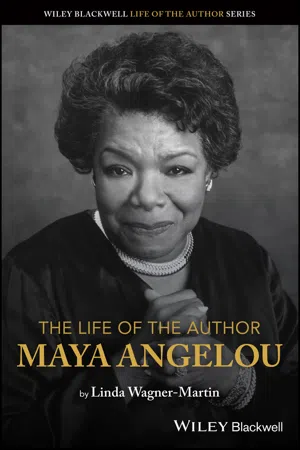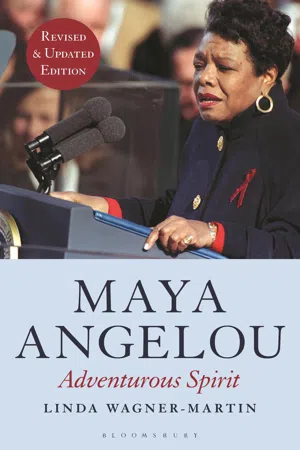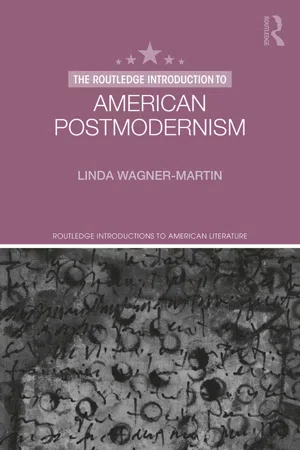I Know Why The Caged Bird Sings
"I Know Why The Caged Bird Sings" is an autobiographical novel by Maya Angelou that explores her early years and the challenges she faced growing up as a black girl in the segregated South. The book delves into themes of racism, identity, and resilience, and is celebrated for its powerful storytelling and lyrical prose.
5 Key excerpts on "I Know Why The Caged Bird Sings"
- eBook - ePub
- Linda Wagner-Martin(Author)
- 2021(Publication Date)
- Wiley-Blackwell(Publisher)
...It is a classic. Angelou was amazed that her carefully written memoir was on bookstore shelves, and sometimes prominently displayed in bookstore windows. It seemed as if every newspaper and magazine that Angelou came across carried a review of her autobiography. And then the essays started – eventually these would run to over 100 scholarly works, all focused on I Know Why The Caged Bird Sings. For Angelou, who had never read academic literary criticism, it was amazing that professional critics had found so much to say about her story, her life, her writing. In the apt words of Joanne Braxton, one of Angelou’s best critics, “Angelou inscribes her resistance to racism, sexism, and poverty within the language, the imagery, the very meaning of her text: her truth-telling vision confronts stereotypes old and new, reversing perspective and discomforting the reader seeking safety in the conventional platitudes of the status quo. Simultaneously, I Know Why The Caged Bird Sings’ s profoundly moral stance challenges its audience to confront the contradictions of life and to create positive change, beginning with oneself and with one’s community.” Braxton was one of the earliest critics to praise Angelou’s double narrative voices – the adult who sees events retrospectively and the “girlchild,” the “Maya voice,” or young Marguerite – and the fact that such a seemingly effortless double vision allows Angelou to comment on both history and memory. “To borrow from the blues idiom of Ralph Ellison, the mature autobiographer consciously fingers the jagged edges of her remembered experience, squeezing out a tough lyric of black and blue triumph. Maya Angelou … emerges miraculously through a baptismal cataract of violence, abuse, and neglect.” Much critique of both Angelou’s prose and poetry speaks to its basis in speech, in African American speech. Angelou frequently called herself a “recorder.” She also said: “I write for the Black voice and any ear which can hear it...
- eBook - ePub
Maya Angelou
Adventurous Spirit
- Linda Wagner-Martin(Author)
- 2020(Publication Date)
- Bloomsbury Academic(Publisher)
...For five years, Bailey became her voice (Order 148). Maya Angelou traced her life as writer back to those silent years. She said, “We all bring almost unnameable information from childhood . .. If we are lucky, we make transitions, and don’t live in that time of pain and rejection and loneliness and desolation. But there will understandably be bits of it which adhere to us” (Con 221). When Angelou chose the most positive stanza from Paul Laurence Dunbar’s 1899 poem “Sympathy” to serve as the title of her first book, she was already focused on the role of compassion in human lives. I Know Why The Caged Bird Sings, ah me, when his wing is bruised and his bosom sore,. . . It is not a carol of joy or glee, But a prayer that he sends from his heart’s deep core, But a plea, that upward to Heaven he flings—I Know Why The Caged Bird Sings! Even in the midst of rage and pain, the writer, the singer, that allegorical bird, must create a legacy that endures, and one that comforts. Angelou often said, in various interviews, that as a writer she learned to choose to describe episodes that would give hope to readers; her intent in writing autobiography was not to maim either people or their memories: What I have left out of Caged Bird and all the books is a lot of unkindness. I’ve never wanted to hurt anybody. So many of the people are still alive. The most difficult part for me has always been the selection of the incidents...
- eBook - ePub
- Eva Lennox Birch(Author)
- 2016(Publication Date)
- Routledge(Publisher)
...In the recognition scene in I Know Why The Caged Bird Sings, when Angelou’s grandmother is vilified and taunted by the obscenity of white children, Angelou claims that the experienced humiliation gave way to a feeling of triumph. In her reconstruction of that event, Angelou rejoices in a victory as Momma Henderson retains her dignity. Angelou seems to be less preoccupied than her black male counterparts with smashing angrily at the bars of the racial cage. Her concern is to explore the cage in order to salvage the means to transcend and escape. Like Wright’s Bigger Thomas in Native Son Angelou wants to fly, but recognises that a caged bird could batter itself to death on the bars in impotent rage: But a bird that stalks down his narrow cage can seldom see through his bars of rage his wings are clipped and his feet are tied so he opens his throat to sing. 8 This poem crystallises the essential difference between Angelou’s personal search for self-definition and that of many black male writers, whose anger had hardened into a single-minded determination to shake white men into recognition of their own institutionalised inhumanity. The rage against the illogicality of white racism is no less apparent in Angelou’s writing than it is in black male writing, but its effectiveness is amplified for the reader because it is inscribed in the remembered experience of a joyous survivor. Although now a university teacher herself, circumstances had not enabled Angelou to pursue the education which Booker T. Washington had advocated as essential to success. Yet, like him, she too has been welcomed into the corridors of white power in Washington. She did more than just survive. Her poem of address to the nation when she stood in front of President Clinton during his inauguration was heard and seen by millions of people...
- Linda Wagner-Martin(Author)
- 2018(Publication Date)
- Routledge(Publisher)
...It was a gripping story, especially since the child gone mute was this author. Add in some of Angelou’s recognition as a singer and a dancer—a stage celebrity of sorts—and readers looked eagerly for her story. There were almost no women’s autobiographies of interest to contemporary readers—without much planning, Angelou filled a gap that readers hungered to have filled. The story was uplifting; it gave those readers an optimistic satisfaction—that the grandmother of the family, dedicated, devoted to God and His ways, protective of her grandchildren, could succeed in saving them from white persecution. I Know Why The Caged Bird Sings became a staple of college and secondary school courses: it was taught and taught and taught. Nearly fifty years after its first publication, without ever having been out of print, I Know Why The Caged Bird Sings is still taught. 1 For Toni Morrison’s The Bluest Eye, however, only a limited readership existed. Ironically, the plot was similar: Pecola Breedlove was another abused child, but this time the predator was her biological father. There was no larger-than-life grandmother imbued with a firm belief system; there was no Southern culture filled with racist predators. Instead, Morrison drew from her own childhood, and so the narrative was set in northern Ohio. Ohio? What did a reader know about the upper Midwest? What kinds of patterns did that location suggest? In this and in other matters, readers had no immediate point of entry into the story...
- eBook - ePub
- Khalilah L. Brown-Dean(Author)
- 2019(Publication Date)
- Polity(Publisher)
...1 The Personal is Political I first discovered the work of poet and essayist Maya Angelou in middle school. Even though the themes in I Know Why The Caged Bird Sings were mature, I felt a deep connection to the story she told of growing up in Stamps, Arkansas. I flinched when she recounted being raped by her mother’s boyfriend. I cried when Uncle Willie hid in the potato bin to avoid the Ku Klux Klan. Klan leaders throughout the United States included sheriffs, judges, prosecutors, and ministers. It seemed ominous that the very people responsible for protecting vulnerable communities routinely engaged in terrorizing them. Maya Angelou’s voice let me know that it was OK to be a little brown girl with a big Arabic name in a place called Lynchburg, Virginia, with the audacity to imagine possibilities unbound by geography. I vowed to someday thank Dr Angelou in person for inspiring me. At seventeen I finally had the chance – or so I thought. That year Angelou arrived at my high school as part of a citywide Black History Month observance. I was selected as one of the students who would get to speak with her. Being a nerd has its perks. I rehearsed what I would say to her a thousand times. I was determined not to come across as some naïve kid in search of an autograph. With dog-eared copy of my notebook in hand I patiently waited for my turn. But I was awe-struck. The words simply wouldn’t come. Angelou looked at me and said with that beautiful, commanding lilt, “Would you like to say hello?” I eagerly shook my head and squeaked out, “Hello?!” She smiled and took the time to nod her reassurance. I knew in that moment she realized the impact she had on me. Angelou was my intellectual rock star. Quite literally, Angelou made it possible for me to be the first person in my immediate family to earn a four-year degree. I competed in oratorical competitions in high school and earned college scholarships using a number of her poems and essays...




